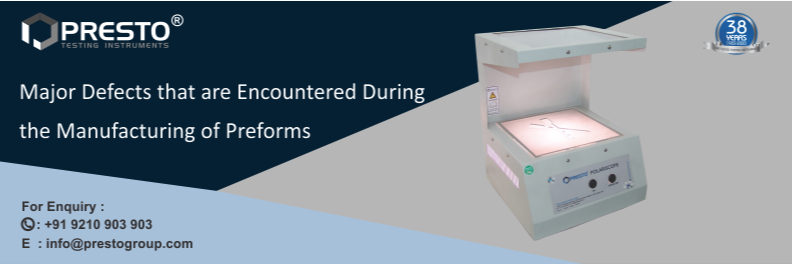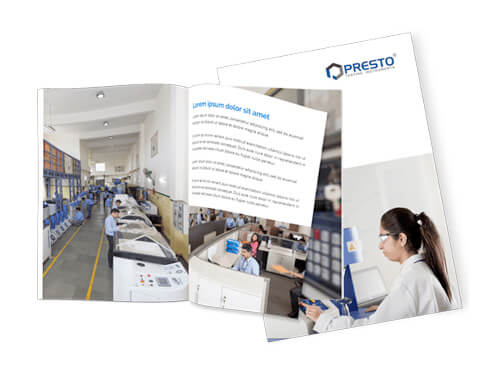Major Defects That Are Encountered During The Manufacturing Of Preforms

PET containers are widely used to in various production verticals like pharmaceuticals, food & beverages, chemical industries, etc. to fulfill the requirement of packaging. Their efficiency of high strength, low weight, economic competence and another range of properties enhances the usage of the PET products. Although they are very effective, there are many defects that are encountered by the producers at the very initial stage of the production i.e. at the time of production of Preforms, from which theses bottles are manufactured. These defects degrade the quality of the Preforms and manufacturers have to cancel an entire lot of production due to these defects. Some major defects that are noticed at the time of production are mentioned below:
Effect of Neck lens –
The excess of material collected under the neck of the Preform forms a lens. This defect in the performs are occurred due to the presence of cold areas on the body of the Preform, due to the delay in the process of blowing, due to the touching of the rod on the Preform.
The defect of neck lens can be rectified by considering various quality assurance measures like enhance the percentage of heating in the area under the neck to maintain the equal distribution of material in the perform, delay the process of blowing, decrease the pressure of pre blowing, check that the stretching rod appropriately fit the Preform.
Effect of Bottom Lens –
The defect occurs when the excess of material is get collected around the gate runner. This defect occurs due the insufficient heating of the Preform from the bottom, due to low blowing pressure, delay in the blowing process or low flow rate at the time of pre-blowing
The defects of bottom lens can be rectified by following various quality assurance strategies and to test the quality of the PET containers and bottles like exaggerate heating in the particular area or diminishes the heating power from one or more areas of broad parts of the bottom, enhance the pre-blowing pressure, startup the pre-blowing earlier and enhance the pre-blowing flow rate.
Dimness in the Bottom Area
Dimness in the bottom area also known as “white foot” appears because of cold stretching or over stretching of the Preform. This occurs when there is not enough material in the gate runner. When the bottom of the Preform is of a petaloid type, the material in the foot corners does not match completely with the corner of the mould recess. The wall of the foot area is not thick enough that makes the bottoms less strong. This makes the bottom appearance dim.
This defect in the Preforms occurs when the heat is not adjusted properly in the body area of the bottle. The defect also occurs due to the early blowing or due to the increased flow rate of pre-blowing. The wall of the preform from the bottom also becomes thick when the big blow pressures prevent the material from reaching the corners of the Preforms.
The defects can be rectified by enhancing the heating power in the particular area. The defect of uneven material distribution in Preforms can also be detected by viewing the Preform under the polarized light. This can be done appropriately with the help of a testing instrument known as Polariscope.
Apart from above-mentioned defects, there are various defects that degrade the quality of the Preform like Gate Runner Offset, Ring on the body, Compressed neck, the excessive material in the shoulder area and many more. Presto offers a high quality of Pet & Preform testing instruments to ensure the quality of the Preforms and to eradicate the defect that are encountered at the time of production.
Recent News
- Paper & Packaging Testing Instruments
- Paint, Plating & Coating Testing Instruments
- Plastic & Polymer Testing Instruments
- Environmental Testing Chambers
- PET & Preform Testing Instruments
- Color Measuring Testing Instruments
- View Entire Range Instruments

Catalogue 2023
Get information about new product launches, research, innovation and endeavors at Presto.
download Free CopyNeed more information
Connect with us for your business enquiries. Generally we respond within one or two working days.
send enquiriesContact Us
Get a Quote
